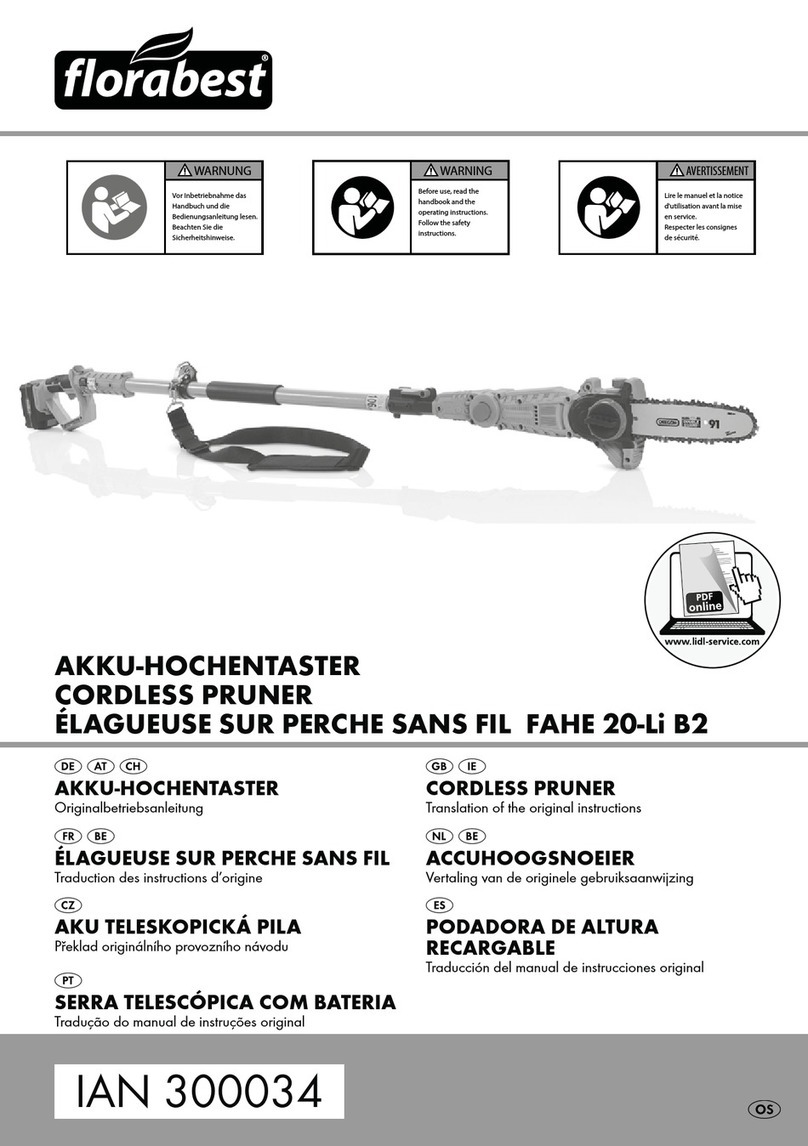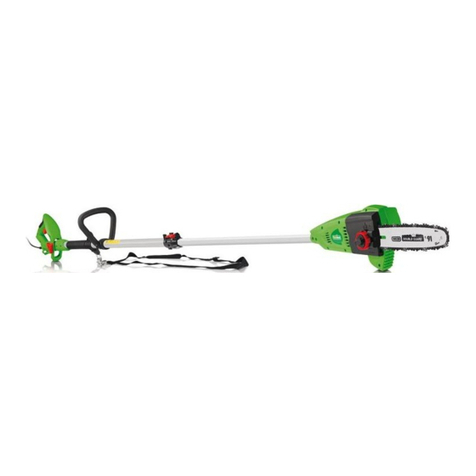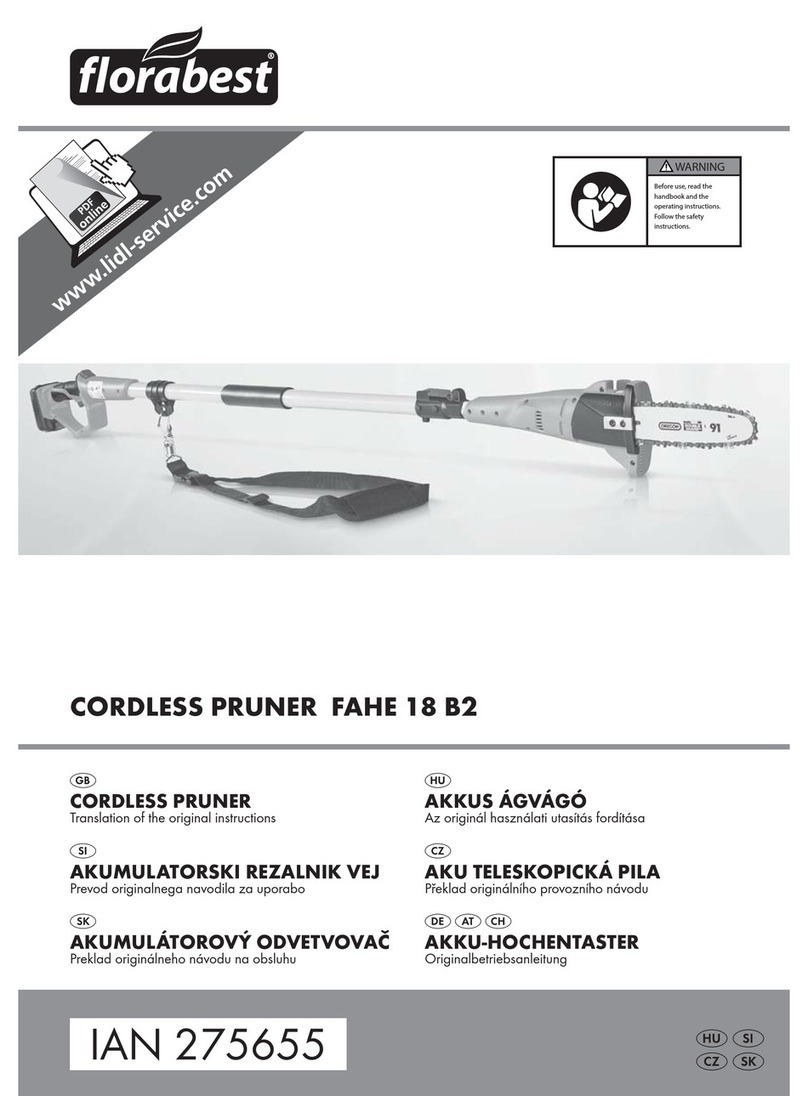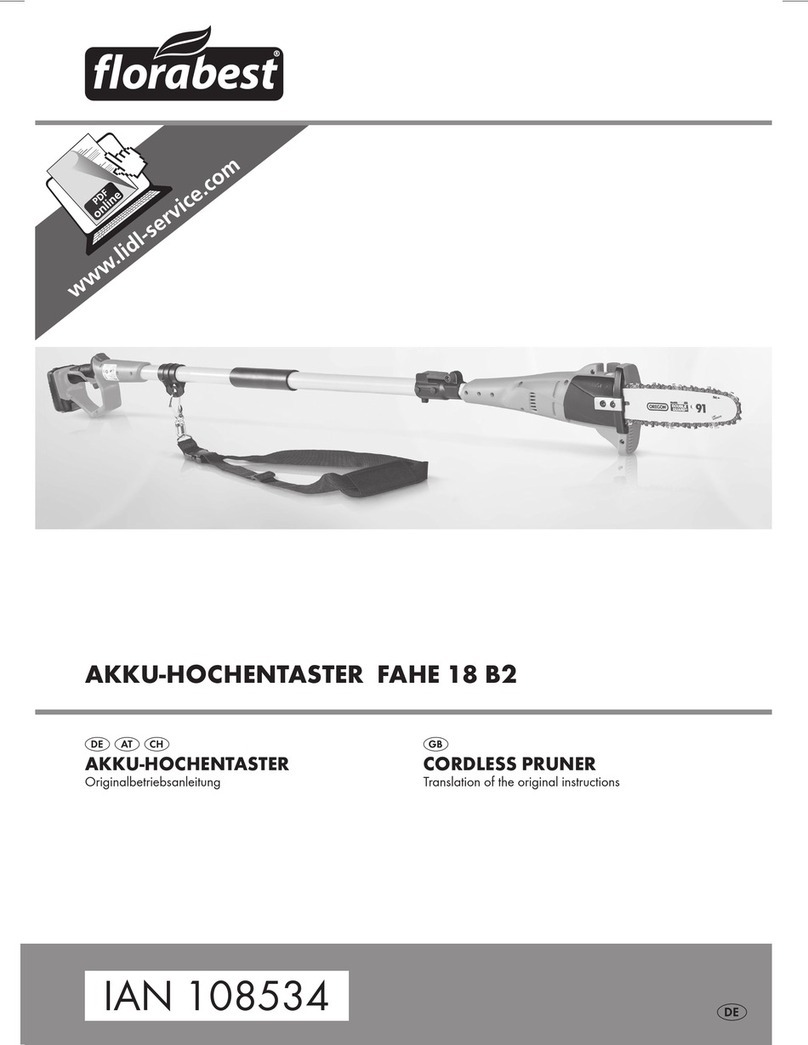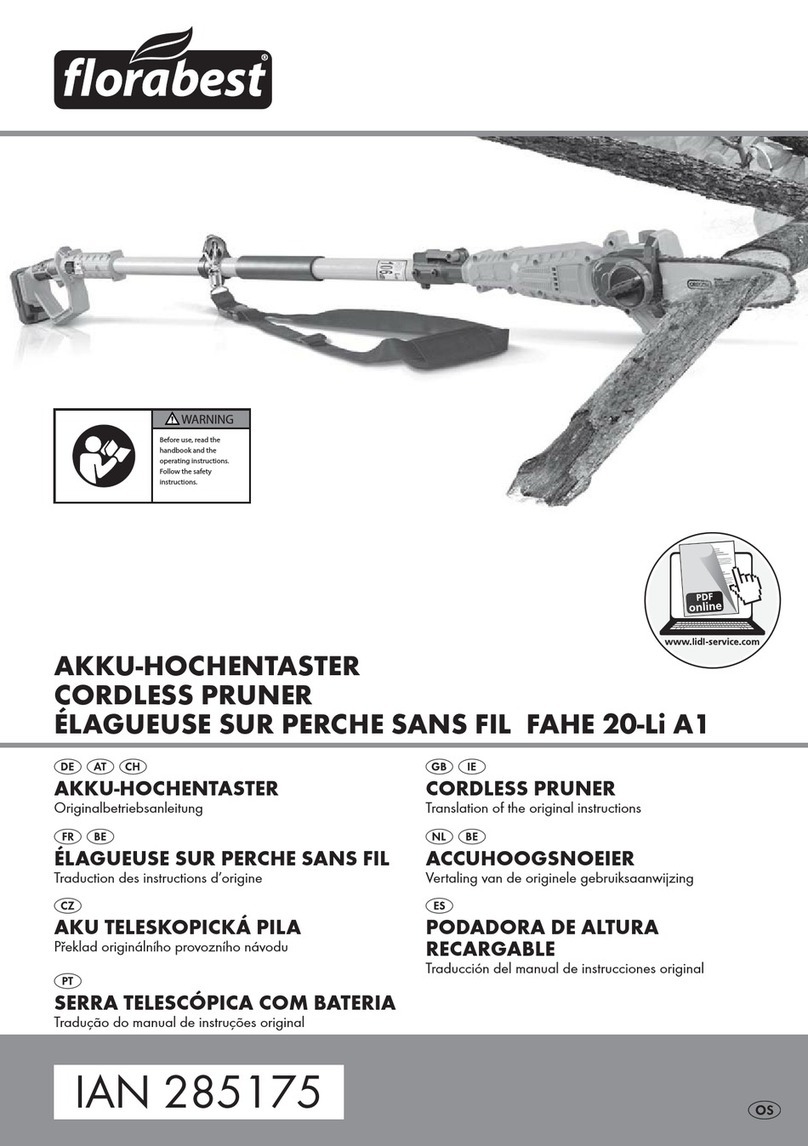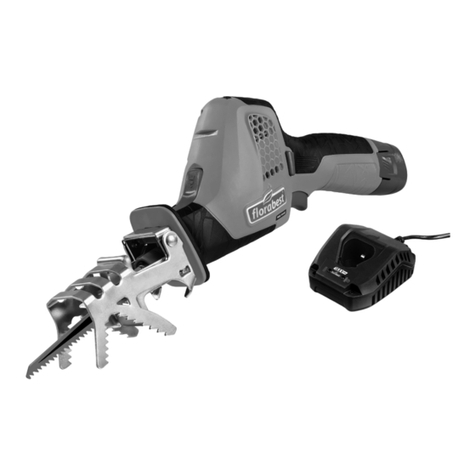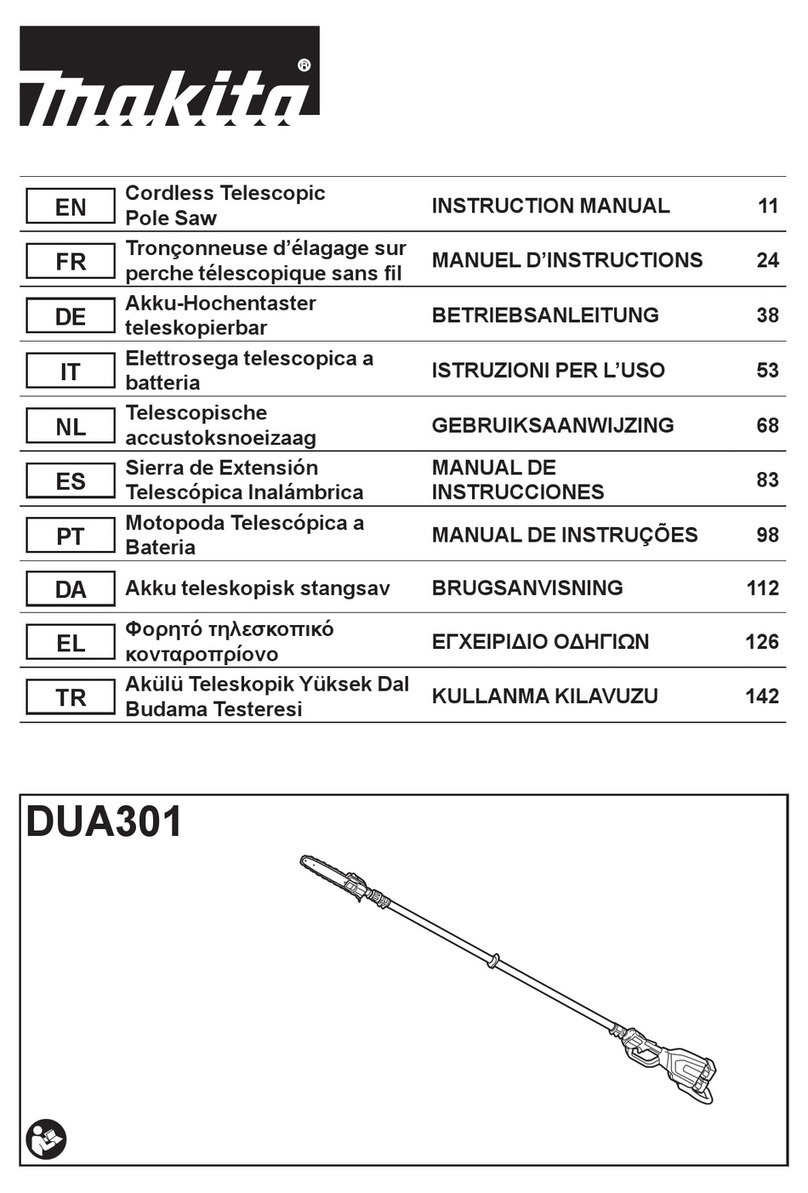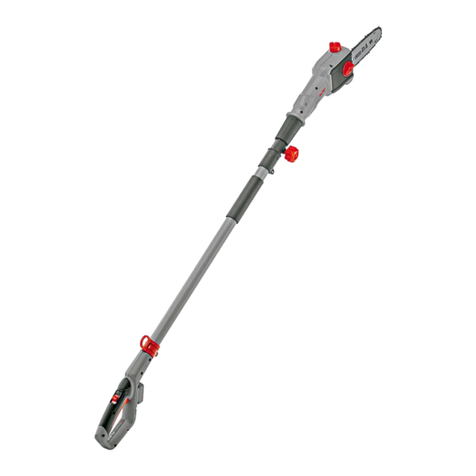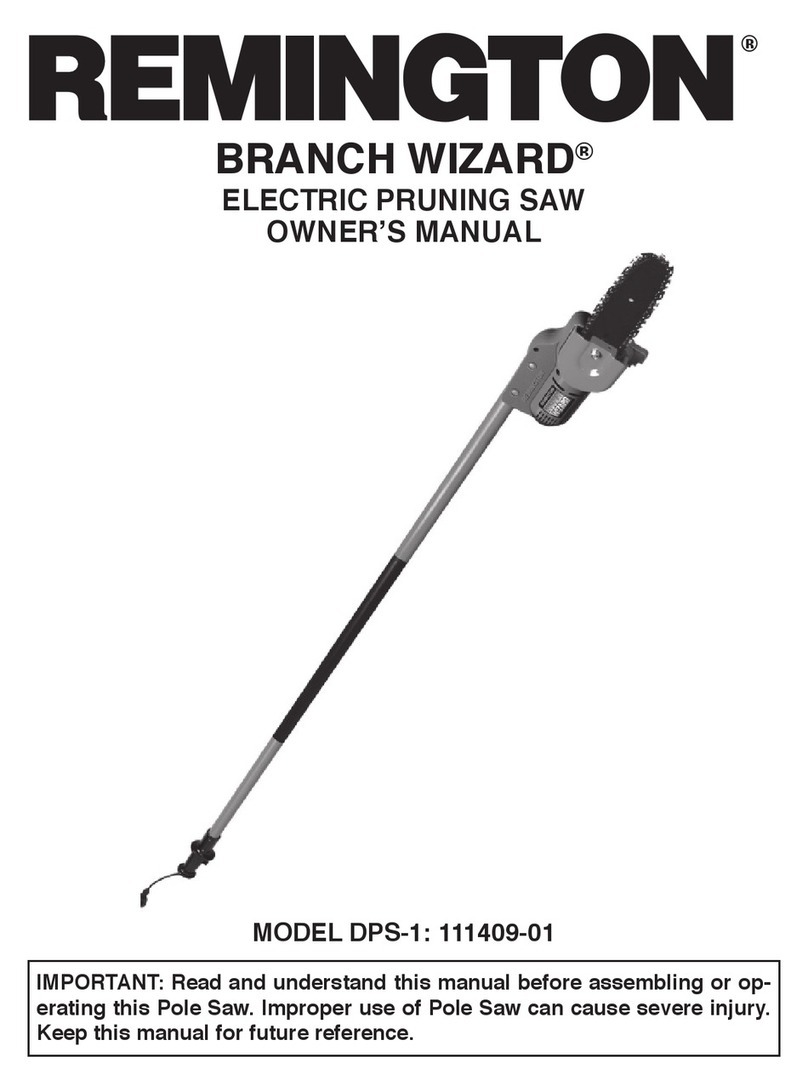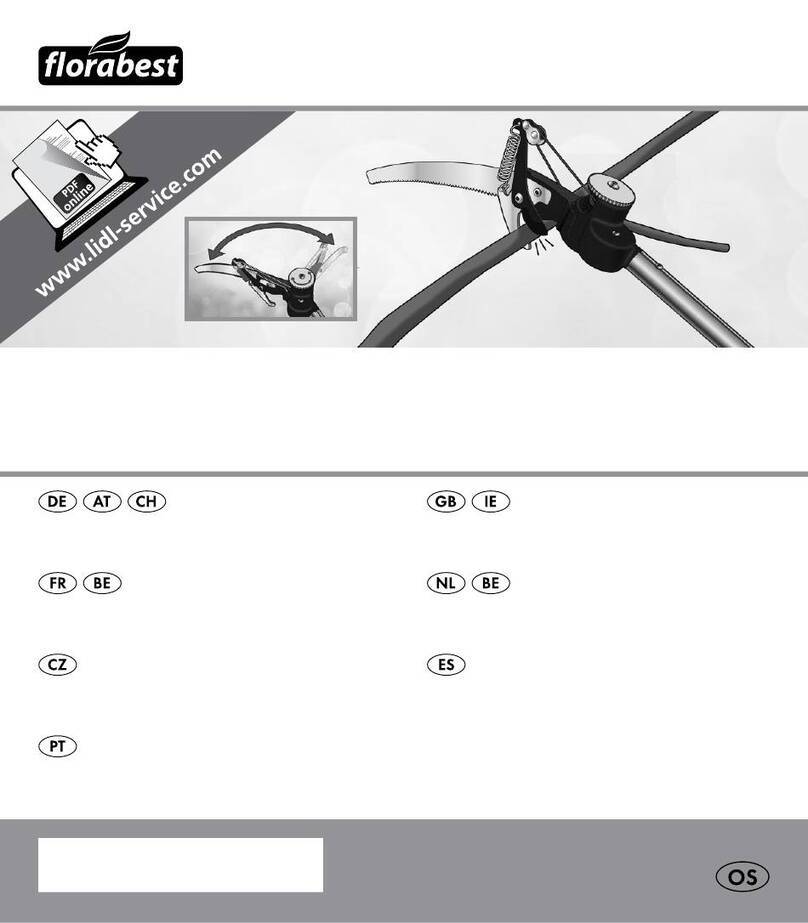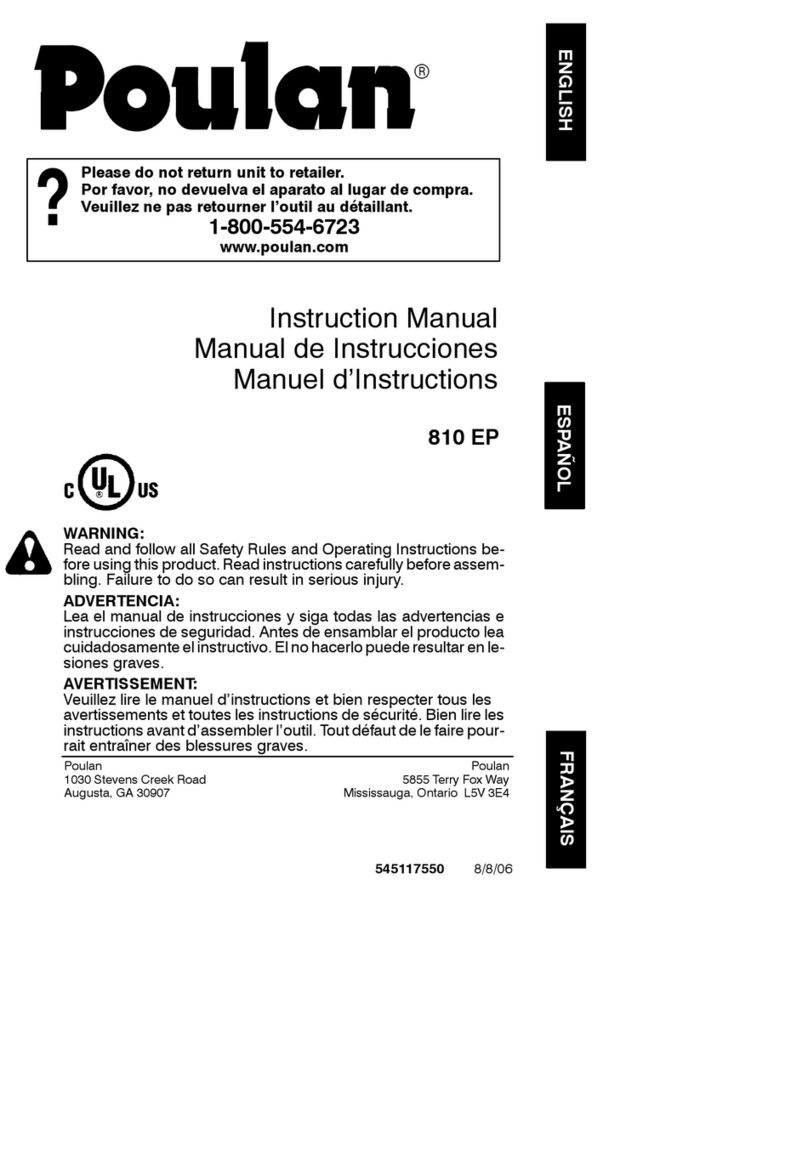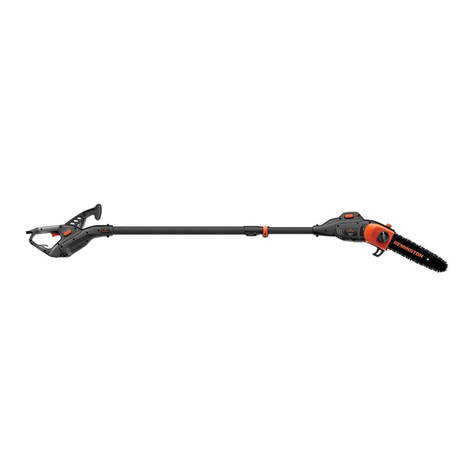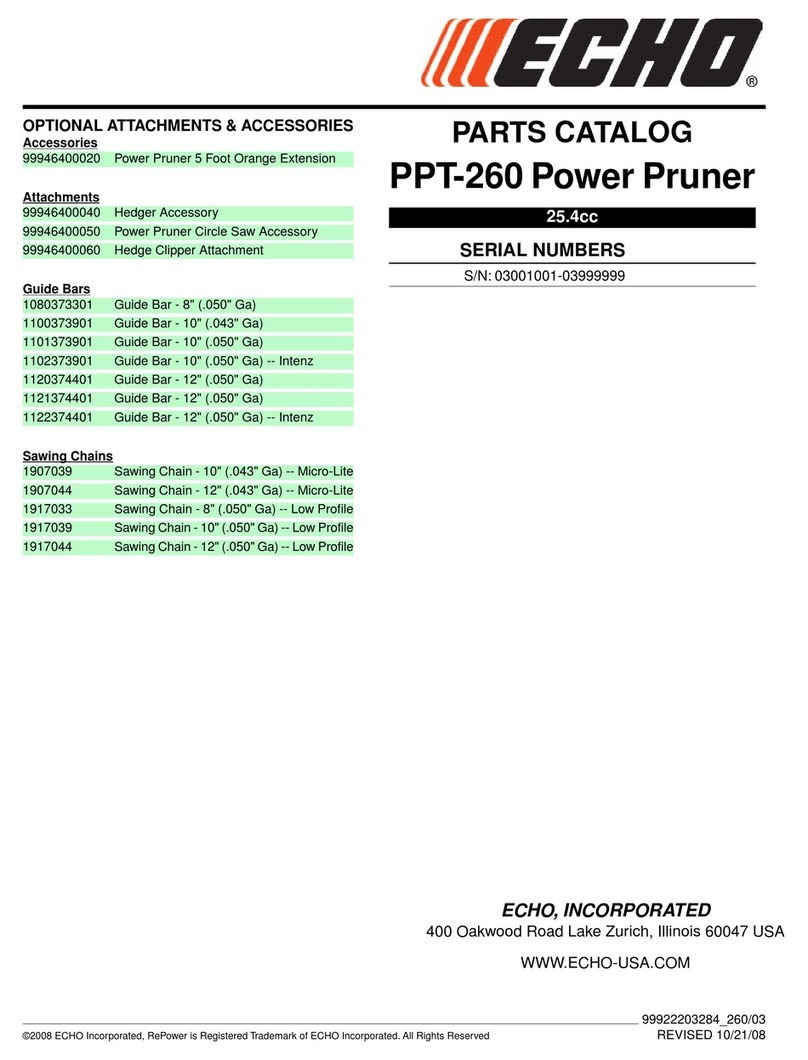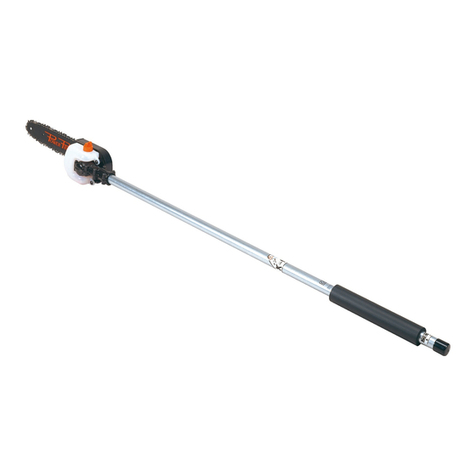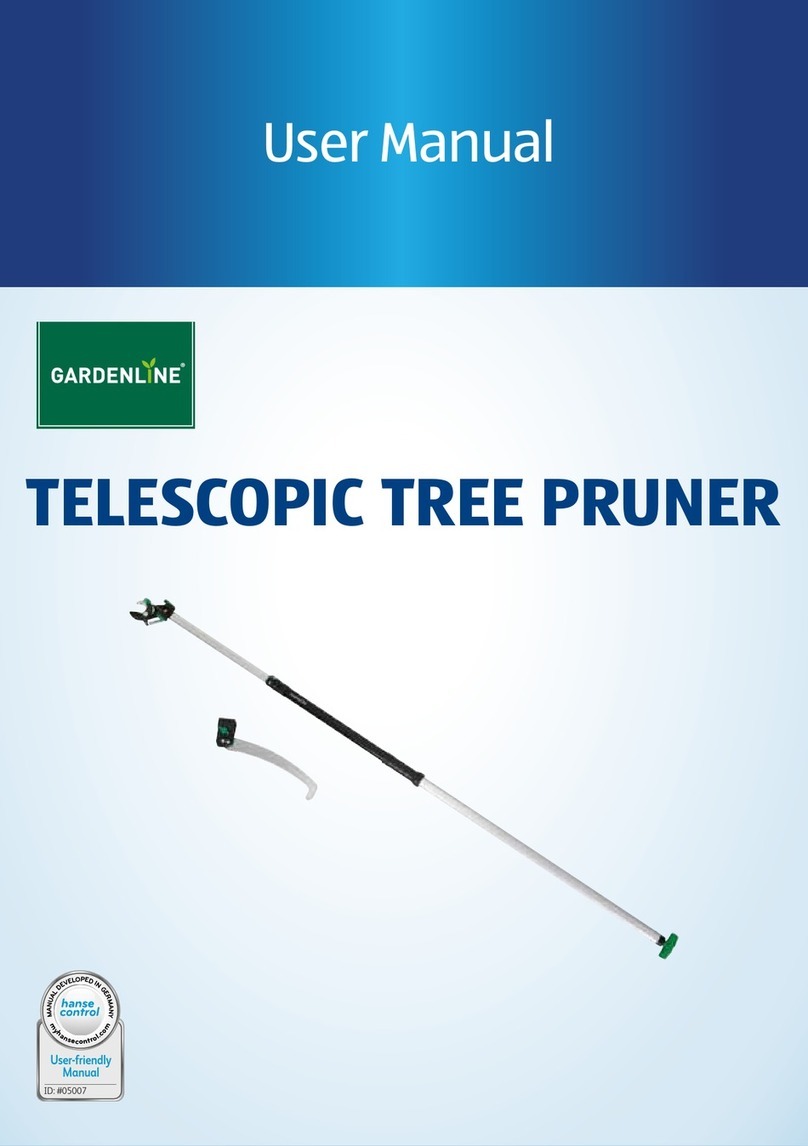
10
GB
Electrical safety
• Power tool plugs must match
the outlet. Never modify the
plug in any way. Do not use
any adapter plugs with earthed
(grounded) power tools. Unmod-
ied plugs and matching outlets will
reduce risk of electric shock
• Avoid body contact with
earthed or grounded surfaces,
such as pipes, radiators, rang-
es and refrigerators. There is an
increased risk of electric shock if your
body is earthed or grounded.
• Do not expose power tools to
rain or wet conditions. Water
entering a power tool will increase the
risk of electric shock.
• Do not abuse the cord. Never
use the cord for carrying, pulling
or unplugging the power tool.
Keep cord away from heat, oil,
sharp edges or moving parts.
Damaged or entangled cords increase
the risk of electric shock.
• When operating a power tool
outdoors, use an extension cord
suitable for outdoor use. Use of a
cord suitable for outdoor use reduces
the risk of electric shock.
• If operating a power tool in a
damp location is unavoidable,
use a residual current device
(RCD) protected supply. Use of an
RCD reduces the risk of electric shock.
Personal safety
• Stay alert, watch what you are
doing and use common sense
when operating a power tool.
Do not use a power tool while
you are tired or under the inu-
ence of drugs, alcohol or medi-
cation. A moment of inattention while
operating power tools may result in
serious personal injury.
• Use personal protective equip-
ment. Always wear eye pro-
tection. Protective equipment such
as dust mask, non-skid safety shoes,
hard hat, or hearing protection used
for appropriate conditions will reduce
personal injuries.
• Prevent unintentional start-
ing. Ensure the switch is in the
off-position before connecting
to power source and/or battery
pack, picking up or carrying the
tool. Carrying power tools with your
nger on the switch or energising pow-
er tools that have the switch on invites
accidents.
• Remove any adjusting key or
wrench before turning the pow-
er tool on. A wrench or a key left at-
tached to a rotating part of the power
tool may result in personal injury.
• Do not overreach. Keep proper
footing and balance at all times.
This enables better control of the pow-
er tool in unexpected situations.
• Dress properly. Do not wear
loose clothing or jewellery.
Keep your hair, clothing and
gloves away from moving
parts. Loose clothes, jewellery or long
hair can be caught in moving parts.
• If devices are provided for the
connection of dust extraction
and collection facilities, ensure
these are connected and prop-
erly used. Use of dust collection can
reduce dust-related hazards.


